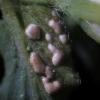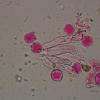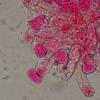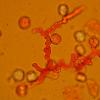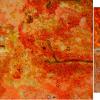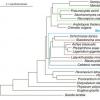
21-12-2025 21:32
Pol DebaenstHello, Garden, Burgweg 19, Veurne, BelgiumOn 10/1

21-12-2025 21:40
Isabelle CharissouBonjour, j'aimerais connaitre les références de

21-12-2025 21:31
Pol DebaenstHello, Garden, Burgweg 19, Veurne, BelgiumOn 10/1

21-12-2025 21:31
Pol DebaenstHello, Garden, Burgweg 19, Veurne, BelgiumOn 10/1

20-12-2025 23:08
Patrice TANCHAUDBonsoir, récolte sur sol sablonneux dans l'arri�

21-12-2025 09:32
Hello.A tiny ascomycete found embedded in wood in

20-12-2025 15:47
Mirek GrycHi.These grew on pine wood that was heavily covere
 Dear friends, I have found an Albugo sp. on Convolvulus siculus which according to (old school?) literature it has to be something else from A. candicans, and so something interesting. I have not met a single post on Albugo on this forum (unf.) so hope I am not off topic and this might interest some of you.
Dear friends, I have found an Albugo sp. on Convolvulus siculus which according to (old school?) literature it has to be something else from A. candicans, and so something interesting. I have not met a single post on Albugo on this forum (unf.) so hope I am not off topic and this might interest some of you.I am posting some images
In particular I wish to learn what are the large cushion-shaped structures with a wide opening or circular shape at the apex posted in the last pic.

Sporangiophores: 40-45 x 14-18um (n=3)
Sporangia 16-20um (n=17)
Oogonia not observed ?? (are they present in young pustules or produced and present in a much mature stages , eg in old infected leaves?)

Well, this is an off topic. This forum is for Ascomycetes (only).
But to give you an answer:
A. candida is restricted to Brassicacae.
Your "fungus" probably is Albugo ipomoeae-panduratae.
And about the cushion-like structures - their are glandular trichomes.
All the best

See Choi D, Priest MJ, 1995. A key to the genus Albugo. Mycotaxon 53:
261–272. for a key.
Although it should be borne in mind that Voglmayr & Riethmüller "Phylogenetic relationships of Albugo species (white blister rusts) based on LSU rDNA sequence and oospore data" in Mycological Research 110 (2006) pp. 75-85
comment ". . . .it should be noted that a taxonomic revision of the Albugo species from Convolvulaceae is badly needed; the oospore morphology especially, which represents a prime character for the distinction of the species of this group, should be re-investigated. This is particularly difficult as the oospores are not produced in the leaves but in distorted stems, which are only rarely collected."
regards
Chris

Million thanks for your info, explanations, and extract. I was happy that I got to know those structure are glandular trichomes. In fact I noted that they had the same aperture size as the base of a normal trichome, but never thought of glandular hairs (will research as soon as I finish this post). I agree with the ID (I was considering this as first ID yesterday after seeing spronagia of this species online matching with mine). I've also got a reason why I have not seen Oospores ;-)
P.s. Are Oomycetes not water mould => fungi?
Case solved, thanks

